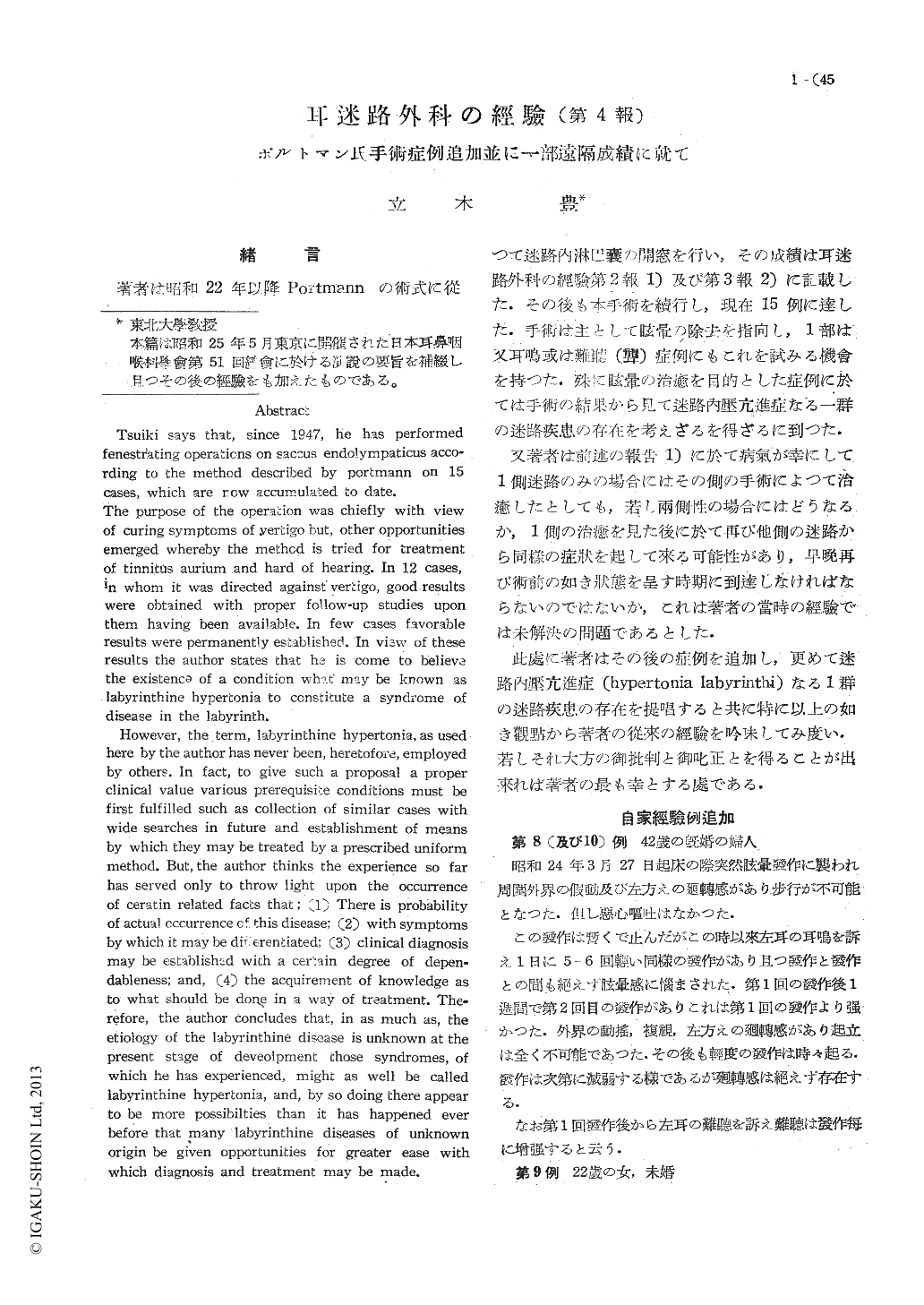- 有料閲覧
- 文献概要
- 1ページ目
緒言
著者は昭和22年以降Portmannの術式に從つて迷路内淋巴嚢の開窓を行い,その成績は耳迷路外科の經驗第2報1)及び第3報2)に記載した.その後も本手術を續行し,現在15例に達した.手術は主として眩暈の除去を指向し,1部は又耳鳴或は難聽(聾)症例にもこれを試みる機會を持つた.殊に眩暈の治癒を目的とした症例に於ては手術の結果から見て迷路内壓亢進症なる一群の迷路疾患の存在を考えざるを得ざるに到つた.
又著者は前述の報告1)に於て病氣が幸にして1側迷路のみの場合にはその側の手術によつて洽癒したとしても,若し兩側性の場合にはどうなるか,1側の治癒を見た後に於て再び他側の迷路から同樣の症状を起して來る可能性があり,早晩再び術前の如き状態を呈す時期に到達しなければならないのではないか,これは著者の當時の經驗では未解決の問題であるとした.
Tsuiki says that, since 1947, he has performed fenesteating operations on saccus endolympaticus according to the method described by portmann on 15 cases, which are now accumulated to date.
The purpose of the operation was chiefly with view of curing symptoms of vertigo but, other opportunities emerged whereby the method is tried for treatment of tinnitus aurium and hard of hearing. In 12 cases, in whom it was directed against vertigo, good results were obtained with proper follow-up studies upon them having been available. In few cases favorable results were permanently established. In view of these results the author states that he is come to believe the existence of a condition what may be known as labyrinthine hypertonia to constitute a syndrome of disease in the labyrinth.
However, the term, labyrinthine hypertonia, as used here by the author has never been, heretofore, employed by others. In fact, to give such a proposal a proper clinical value various prerequisite conditions must be first fulfilled such as collection of similar cases with wide searches in future and establishment of means by which they may be treated by a prescribed uniform method. But, the author thinks the experience so far has served only to throw light upon the occurrence of ceratin related facts that ;(1) There is probability of actual occurrence cf this disease; (2) with symptoms by which it may be differentiated; (3) clinical diagnosis may be established with a certain degree of dependableness; and, (4) the acquirement of knowledge as to what should be done in a way of treatment. Therefore, the author concludes that, in as much as, the etiology of the labyrinthine disease is unknown at the present stage of deveolpment chose syndromes, of which he has experienced, might as well be called labyrinthine hypertonia, and, by so doing there appear to be more possibilties than it has happened ever before that many labyrinthine diseases of unknown origin be given opportunities for greater ease with which diagnosis and treatment may be made.

Copyright © 1951, Igaku-Shoin Ltd. All rights reserved.


